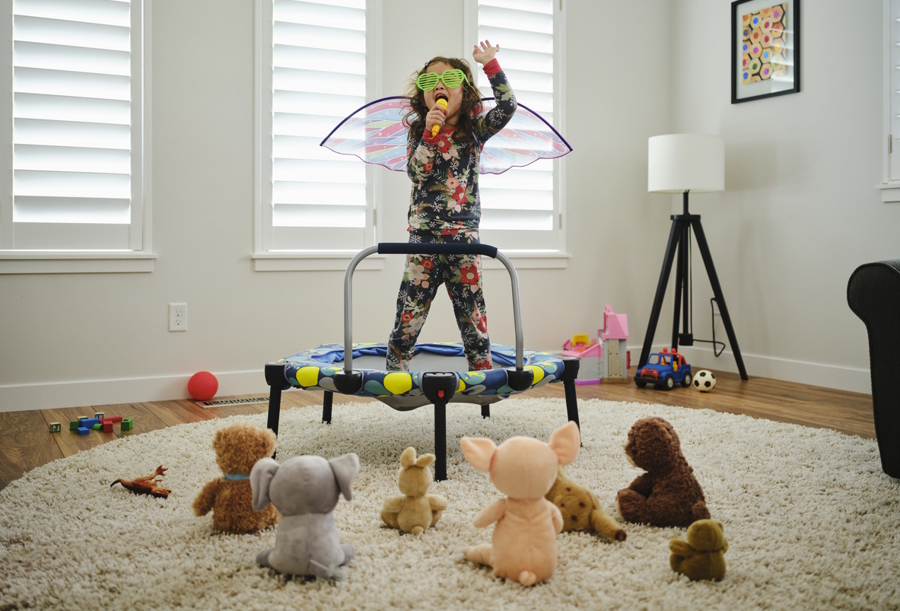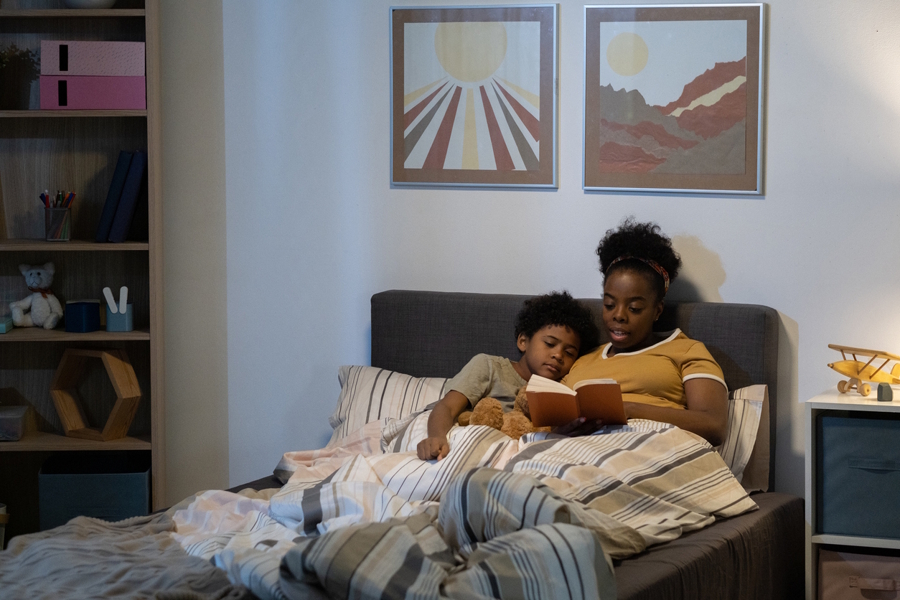
Photo:
iStock
I’ve written elsewhere about how screen time stresses and detunes the body clock, brain chemistry and reward pathways, as well as how tech addiction can actually damage the brain’s frontal lobe. I’ve also shared how an electronic fast can reset and resynchronize the nervous system, improving a child’s mood, sleep, focus and behavior in a matter of weeks.
The following are 10 evidence-based practices that can act as buffers against some of the changes caused by overstimulation from screen time. These methods either counteract screen time’s effects directly (such as by helping to synchronize, strengthen or protect the body clock) or indirectly (for example, by facilitating deeper sleep or discharging pent-up energy). While this information was originally written with children in mind, it applies to adults, too.
|
For more support and resources surrounding the youth mental health crisis, screen time and social media, and the importance of play, visit ParentMap’s Antidote for the Anxious Generation page. |
10 strategies to counteract the effects of daily screen time
1. Increase exposure to greenery, nature and sunlight.
A growing body of research suggests that green spaces enhance mental health and learning capacity, both immediately and over time, by lowering stress levels and restoring attention. Greenery simultaneously restores attention by drawing the eye while calming the nervous system, creating a state of “calm alertness” — a state considered ideal for learning. (This is in contrast to stress-based alertness associated with screen activities, which deplete attention.)
Similarly, studies show exposure to sunlight can reduce attention deficit hyperactivity disorder (ADHD) while abundant bright light first thing in the morning can help restore disrupted circadian rhythms, improve mood and enhance restorative sleep.
2. Incorporate more movement, exercise and free play.
While stress and screen time break down brain connectivity, exercise does the reverse — it builds connections and actually makes the brain bigger! Exercise fights depression, poor focus, insomnia, addiction and anxiety by raising and balancing the very brain chemicals and hormones that become imbalanced when using electronics. In addition, varied and regular movement throughout the day helps develop core muscle strength, stimulates the vestibular system and discharges pent-up energy — all things that foster learning and mood regulation. And free play is not just for fun: It encourages brain integration, the mastering of new skills, the ability to grasp others’ mental states, cause-and-effect thinking and the management of conflict.

3. Practice sleep hygiene and create a ‘sleep sanctuary.’
Numerous studies have shown that higher amounts of daily screen time and screen time in the evenings disrupt sleep. Changes include suppressed REM sleep, less time spent in the deeper stages of sleep and a blunted drop in core body temperature. Conversely, restorative sleep is reparative — it helps the brain “clean house,” reduces inflammation and consolidates learning.
You can facilitate more restorative sleep and boost melatonin (the “sleep hormone”) by establishing a consistent sleep/wake routine (including on the weekends), keeping all screens out of the bedroom, using a sleep mask and blackout curtains to make the sleep environment as close to pitch-black as possible, avoiding eating heavy meals close to bedtime, and keeping the temperature of the room cool. Research suggests that parent-set bedtimes are associated with better sleep and improved functioning. To visually send the brain the message that it’s time to sleep, the bedroom should be uncluttered, free of reminders of tasks yet to be done, and cozy.
4. Engage in creative play and activities.
Creative activities stimulate the right brain, the hemisphere that is often underactive in our information-overloaded world. But the creative process also activates areas throughout the entire brain, facilitating whole-brain and brain-body integration. Moreover, flexing our creative muscle helps build problem-solving skills.
Studies have shown that screen time stunts imaginary play. When the brain is fed a constant stream of stimulating entertainment that saturates the senses, it deadens the creative drive, as does viewing a two-dimensional screen emitting flat, unnatural light. In contrast, reduced levels of stimulation enhance creativity, and varying fields of depth and the interplay of depth and shadow found in the natural world stimulate the mind to wonder and imagine.

5. Practice mindfulness.
Mindfulness includes activities such as yoga, meditation and breath work. While it can be tricky to get children to meditate, most will enjoy kids’ yoga once they get started, and the benefits of such practices cannot be overstated. When children start practicing a mindfulness activity, invariably they are calmer, less easily frustrated and better rested. How is that possible? Meditation and yoga quiet the brain, reduce stress and stimulation, improve blood flow, and even balance our hormones. As mentioned, electronic stimulation combined with our hectic lifestyles mean that most of us get too much stimulation.
Research suggests that meditation is associated with increased thickness of the cortex — the exact opposite of an effect found in tech addiction. Another study showed that second- and third-graders who were taught mindfulness techniques exhibited an improvement in executive functioning, particularly in those with preexisting attention problems.
6. Bring on the bonding: human touch, empathy and love.
It is well documented that children who are held, rocked, soothed and attended to by an “in tune” parent have larger brains than children who are touched less or who are outright neglected. Eye contact, in particular, fosters bonding and stimulates brain development, and children these days receive less eye contact than ever as a result of both kids and parents being locked onto screens. Eye contact, face-to-face interaction, touch and observing body language all help children learn to regulate emotion and states of arousal, develop a sense of self and build capacity for intimacy. Furthermore, healthy attachment to caregivers actually protects against addictions of all kinds, including tech addiction.
Other research has shown that feeling and expressing love and compassion help stimulate the frontal lobe and facilitate executive functioning and self-regulation.

7. Assign daily chores to the entire family — even the little ones.
The Learning Habit Study showed that kids with the highest grade point averages did more chores, had less than 30 minutes of daily screen time and spent more time with their parents. Another study indicated that children who started doing chores at age 3 or 4 were more likely to have successful relationships and careers and were more self-sufficient. For adults, daily chores have been shown to boost mood and productivity and to decrease risk of heart disease — a condition closely tied to chronic stress.
8. Mimic nature’s day/night light cycles as closely as possible.
Artificial light at night, such as the lighting in our homes and especially from screens, throws off the body clock as well as hormone and brain chemistry regulation, contributing to depression, impaired daytime functioning, obesity and other health issues. To best counteract this, avoid screen activities (especially interactive ones) after sundown. And, as mentioned earlier, increase exposure to natural sunlight during the day.

9. Tone down the brightness levels on all screens.
For televisions, choose the “natural” setting and lower the brightness and contrast controls to more closely match the surrounding environment. For computers, laptops, tablets and phones, download software such as f.lux to warm and darken the devices’ screens as it gets later in the day. Although this will help block some of the melatonin-suppressing blue light, melatonin can still be suppressed by screens even when blue light is blocked — just not as much.
10. Go wired and give Wi-Fi the boot.
Doing so will kill two birds with one stone. First, research suggests that electromagnetic fields emitted by Wi-Fi signals may suppress melatonin and increase arousal levels, just as screen light does. Second, using wired-only internet access automatically reduces device use while increasing productivity when you do use it. If you can’t commit to that, at least turn off the Wi-Fi at night to give your nervous system a break.

While we can’t get away from screens entirely, incorporating these practices into our daily routine — along with taking regular breaks from screens altogether — can go a long way toward protecting the brain and bolstering its resilience, especially over time.
Editor’s note: This article was adapted from the author’s book “Reset Your Child’s Brain: A Four-Week Plan to End Meltdowns, Raise Grades, and Boost Social Skills by Reversing the Effects of Electronic Screen-Time” and first appeared on the Psychology Today blog Mental Wealth. We are resharing this popular article and ParentEd Talks webinar as additional guidance for parents in establishing rules of the road for screen time and social media use. It was originally published in 2022 and most recently updated by ParentMap’s associate editor, Kari Hanson, on May 2, 2025.











